Dubrovnik is a historic city on Croatia’s southern coast. It is known for its old stone walls, red-roofed buildings, and clear blue sea. The city was an important trading hub and a powerful republic in the past. Today, visitors walk through its narrow streets, explore forts, and take boat trips to nearby islands. Many come to see the filming locations of Game of Thrones. People enjoy taking photos, especially from the city walls and Mount Srđ. This guide covers where the city is, how to get there, places to visit, and the best time to visit.
Location
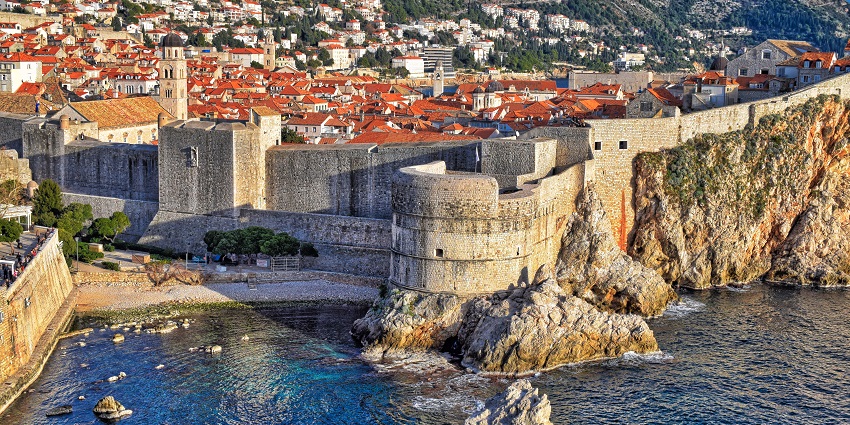
Photo: Miroslav.vajdic / Wikimedia Commons
It is a coastal city in southern Croatia along the Adriatic Sea. It is close to the borders of Montenegro and Bosnia and Herzegovina. The city is known for its historic Old Town, surrounded by medieval walls. It is a major tourist destination and a UNESCO World Heritage Site.
How To Reach

Photo: Bracodbk / Wikimedia Commons
Travelling to Dubrovnik is straightforward, with various options available:
By Air: Dubrovnik Airport (DBV) is approximately 20 km from the city centre. It handles international and domestic flights, connecting Dubrovnik with major European cities. You can reach the city by shuttle bus, taxi, or car hire from the airport.
By Bus: The city has a well-connected bus station with services from various Croatian cities and neighbouring countries. The journey offers scenic views of the Adriatic coastline.
By Rail: The city does not have a railway station. The nearest major train stations are in Split and Ploče, from where you can take a bus to Dubrovnik.
Places To Visit In And Around Dubrovnik
Dubrovnik offers various attractions showcasing its rich history and natural beauty.
1. City Walls
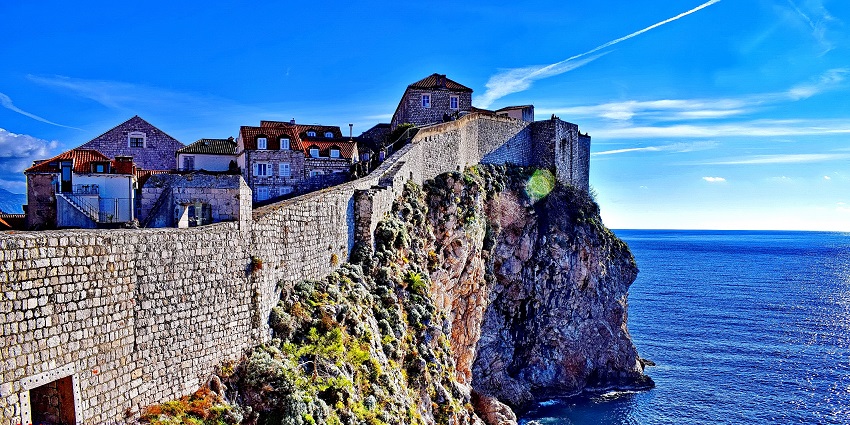
Photo: Miroslav.vajdic / Wikimedia Commons
Dubrovnik’s City Walls are an important part of its history. They were built between the 12th and 17th centuries to protect the city from attacks. The walls stretch for about 2 kilometres and are up to 25 metres high in some areas. They have several towers and forts, including the Minceta Tower, a key defensive point. Walking along the walls, visitors can see old cannons, stone staircases, and small openings used for defence. Many take photos of the rooftops, the sea, and nearby islands. The walk can be tiring, but there are shaded spots to rest.
Timings: 8 AM – 7 PM
Entry Fees: €30 / ₹2500
Ideal Trip Duration: 2 hours
2. Fort Lovrijenac
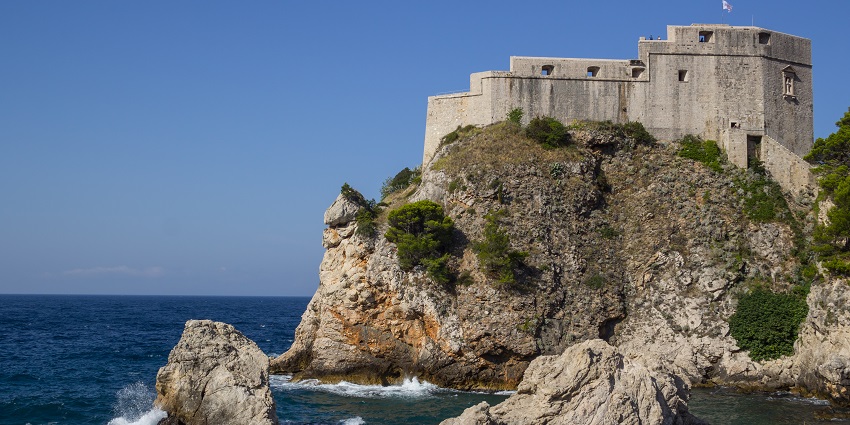
Photo: Zysko serhii / Wikimedia Commons
Fort Lovrijenac stands on a 37-metre-high rock outside the City Walls. It was built in the 11th century to stop the Venetians from invading the city. The walls facing the land are much thicker than the ones facing the sea, as attacks were expected from land. The fort has a large courtyard and a stone staircase leading to different levels. Today, it is used for theatre performances, especially Shakespeare’s Hamlet. People can climb to the top to see the sea and city from a different angle.
Timings: 9 AM – 6 PM
Entry Fees: Included with City Walls ticket
Ideal Trip Duration: 1 hour
3. Rector’s Palace

Photo: Richard Mortel / Wikimedia Commons
The Rector’s Palace was the seat of government when it was an independent republic. The rector was the head of the city, but he could only stay in power for one month to prevent corruption. The building mixes Gothic, Renaissance, and Baroque styles because it was damaged and rebuilt often due to earthquakes and gunpowder explosions. Today, it is a museum with old furniture, paintings, and coins from the city’s past. The courtyard hosts concerts in the summer.
Timings: 9 AM – 6 PM
Entry Fees: €15 / ₹1250
Ideal Trip Duration: 1 hour
4. Lokrum Island

Photo: dronepicr / Wikimedia Commons
Lokrum Island has a long history, as it was once home to Benedictine monks. People say the monks cursed the island when they were forced to leave. The ruins of their monastery still stand, and visitors can explore the stone walls and gardens. Lokrum has a small saltwater lake called the Dead Sea, where people can float easily. There are walking trails leading to the highest point, Fort Royal, built by the French army. Peacocks and rabbits roam freely on the island.
Timings: 9 AM – 8 PM
Entry Fees: €20 / ₹1670
Ideal Trip Duration: Half-day
5. Mount Srđ
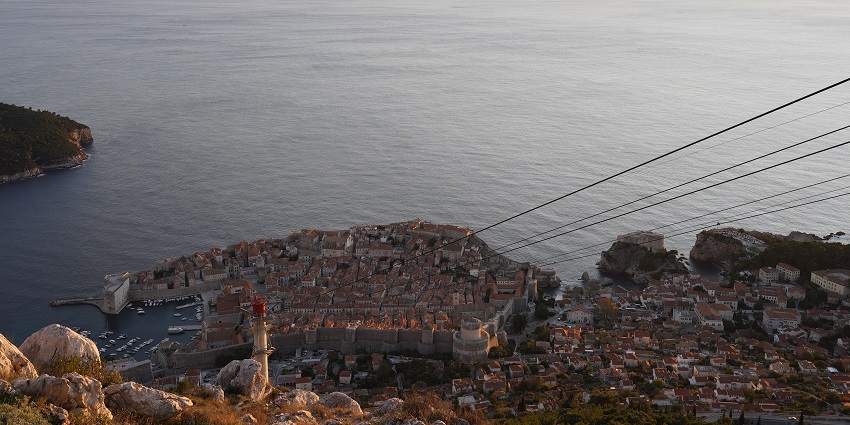
Photo: Flocco21 / Wikimedia Commons
Mount Srđ was important during the Croatian War of Independence in the 1990s. A fort at the top, built by Napoleon’s army, now has a museum about the war. The cable car to the top takes only a few minutes, but some people prefer to hike up the steep trail. At the summit, visitors can see the city, the Adriatic Sea, and nearby islands. The hill has a large stone cross, which was placed there in the 20th century. Some visitors enjoy paragliding from the top, while others take photos of the view.
Timings: 9 AM – 9 PM
Entry Fees: €25 / ₹2100
Ideal Trip Duration: 2 hours
Where To Stay

Photo: peterweideman / Pixabay / Image For Representation Only
The city offers a range of accommodation options to suit different budgets. In the Old Town, you’ll find boutique hotels and guesthouses that place you close to major attractions. For a more relaxed atmosphere, consider staying in the Lapad or Babin Kuk areas, which offer beachfront hotels and resorts.
Where To Eat

Photo: Pixabay / Pexels / Image For Representation Only
The city boasts a variety of dining options. In the Old Town, restaurants serve traditional Croatian dishes, including fresh seafood and local wines. For a meal with a view, consider dining at one of the establishments along the city walls or near the harbour.
Best Time To Visit
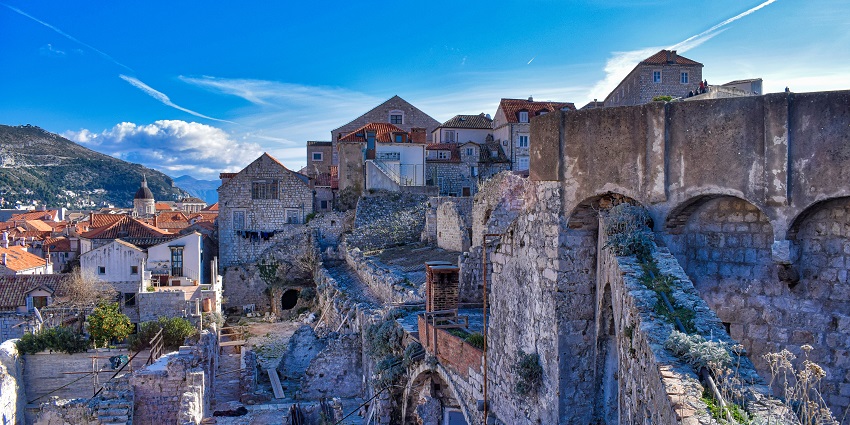
Photo: Miroslav.vajdic / Wikimedia Commons
The best time to visit the city is during the shoulder seasons of May-June and September-October. During these months, the weather is pleasant, and the city is less crowded compared to the peak summer season. This timing also allows for comfortable exploration of the city’s attractions and nearby islands.
Other Factors To Consider

Photo: ian dooley / Unsplash / Image For Representation Only
Average Cost Of The Trip
A trip to Dubrovnik can cost different amounts based on what you choose. On average, you may need around €100-€150 (₹8,350-₹12,500) each day. This includes a place to stay, food, and fun activities. Some places may be cheaper, and some may be more expensive. If you stay in simple hotels, eat at small restaurants, and walk around, you can spend less. If you stay in fancy hotels and eat at big restaurants, it will cost more. Visiting the city is a great experience, and planning your budget well can help you enjoy your trip without spending too much.
Tips For Travellers
- Wear comfortable footwear, as the Old Town’s streets are paved with limestone and can be slippery.
- Carry a reusable water bottle; there are public fountains with potable water.
- Be mindful of the sun; use sunscreen and wear a hat during daytime exploration.
- Respect local customs and regulations, especially in heritage sites.
Dubrovnik is great for its history, old buildings, and sea views. Walking along the City Walls, taking a boat to Lokrum Island, and riding the cable car to Mount Srđ are some of the best things to do. Plan a trip well and check the trip cost to the city in advance. Plan a trip with TripXL for an easy travel experience.
Cover Photo: Zysko serhii / Wikimedia Commons


 WhatsApp
WhatsApp
 Twitter
Twitter









